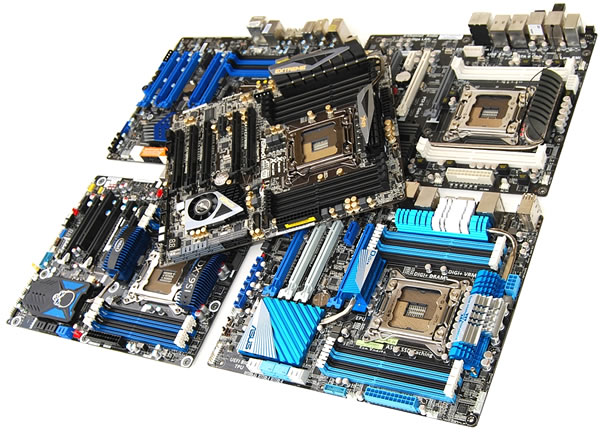Those wanting to build the ultimate performance system will naturally turn to Intel's new LGA2011 platform which recently made its debut with the Sandy Bridge-E processors. This highly refined architecture takes the original Sandy Bridge design and pumps it full of steroids, while adding a few new things. Moreover, the platform is expected to support enthusiast-level Ivy Bridge processors that are slated for release by the end of 2012, adding to the platform's longevity.
The current series' flagship CPU known as the Core i7-3960X boasts a massive 15MB L3 cache and six cores clocked at 3.3GHz. As we found on our review last November, the i7-3960X is 20-30% faster than the Core i7-2600K, though at $999 it's over 3 times more expensive. As crazy as that price might seem, there are those willing to fork out the dough to purchase the world's most powerful desktop processor.
There is also a slightly slower and considerably more affordable option. The Core i7-3930K is already selling for $599, and a third alternative, the Core i7-3820 is set to be released in the coming months. But if you are after a hexa-core processor with L3 cache to spare, then the Core i7-3930K is going to be the cheapest option for a while.
So if you're already spending ~$600 on a processor alone, you'll want to make sure your motherboard is equally impressive. Today we are checking out five high-end X79 motherboards from Asus, Asrock, ECS, Intel and MSI.

When we first tested the LGA2011 platform, we were shocked by the X79 chipset's lack of features. The X79 fails to differentiate itself from the more affordable Z68 as users still get six SATA ports of which only two are 6Gb/s capable. USB 3.0 support is nowhere to be found, but you get the same 14 USB 2.0 ports as on the Z68.
If you compare the X79's features to the older X58/ICH10R chipset combination, you will note that after 3 years very little has changed. Essentially you get two extra USB ports, two additional PCIe x1 lanes and a pair of SATA 6Gb/s port upgrades.
Therefore we expect more than ever that motherboard manufacturers deliver the goods as the LGA2011 platform will only be attractive to the most demanding of PC enthusiasts and gamers building heavily packed machines – you know, those who will be paying ~$300 for a motherboard on top of a very expensive processor.
Unfortunately missing from our roundup is Gigabyte. We do have the G1.Assassin 2 on hand, but frankly we feel that board is not suitable for our roundup. That particular board has a very weak feature set along with an exuberant price tag. Although we would have been happy to wait for Gigabyte to supply us with a board such as the UD5, they were unable to do so. Apparently Gigabyte's HQ is very tight on samples at the moment, must be the economy. Nevertheless all the remaining major players were able to supply the boards that we requested.
